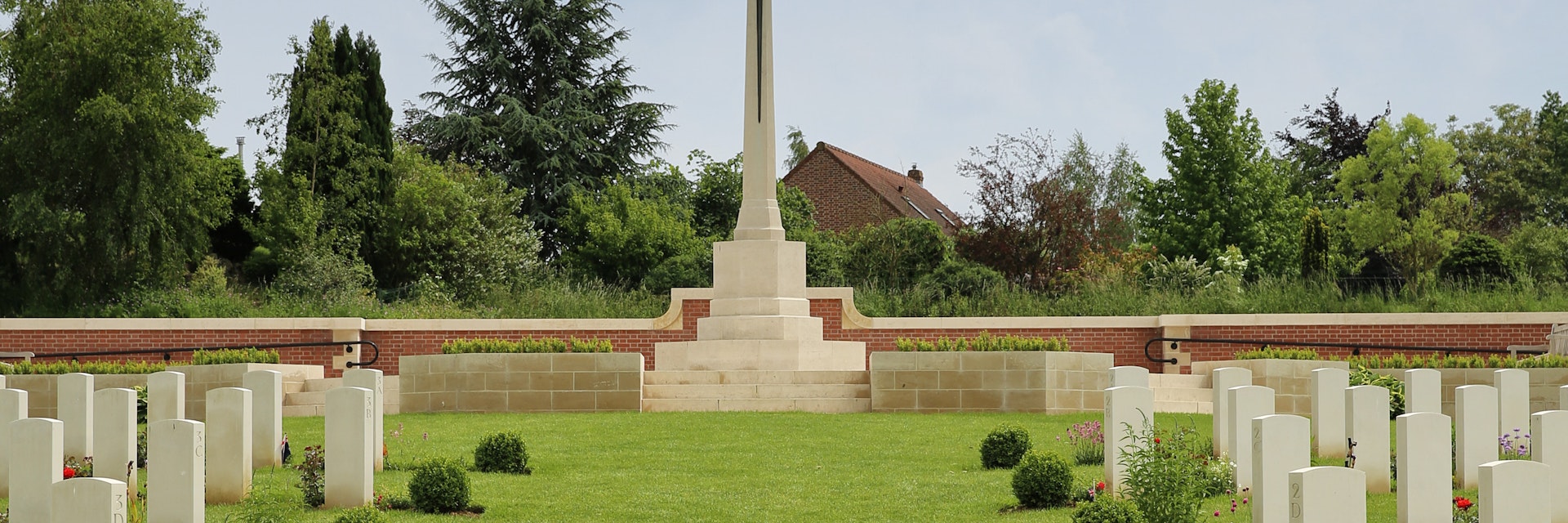The death toll was horrific – 1917 Australians and 519 Britons killed in just one day of fighting – yet the Battle of Fromelles was largely forgotten until 2008, when the remains of 250 of the fallen were discovered. They are now buried in the Fromelles (Pheasant Wood) Cemetery. Next door, the Musée de la Bataille de Fromelles evokes life in the trenches with reconstructed bunkers, photographs and biographies.
On 19 July 1916, a poorly planned offensive using inexperienced Australian and British troops was launched to divert German forces from the Battle of the Somme. After the surviving Australians retreated to their pre-battle front lines, hundreds of their comrades-in-arms lay wounded in no man's land. For three days the survivors made heroic efforts to rescue them, acts of bravery commemorated by the Cobbers sculpture in the Australian Memorial Park, 2km northwest of the museum. Ross McMullin, writing for the Australian War Memorial (www.awm.gov.au), described the battle as the worst 24 hours in Australia's entire history.
It is likely that one of the soldiers on the victorious German side was a 27-year-old corporal in the 16th Bavarian Reserve Infantry Regiment named Adolf Hitler.
After the failed and catastrophic assault, the Germans buried many of the Australian and British dead in mass graves behind their lines. Most were reburied after the war, but five pits were not found for more than 90 years. DNA testing has established the identity of 144 Australians.
The 'Battle of Fromelles Walking Guide' has details on a 10km walking or driving tour of 10 WWI sites near Fromelles, which is 18km west of Lille.

